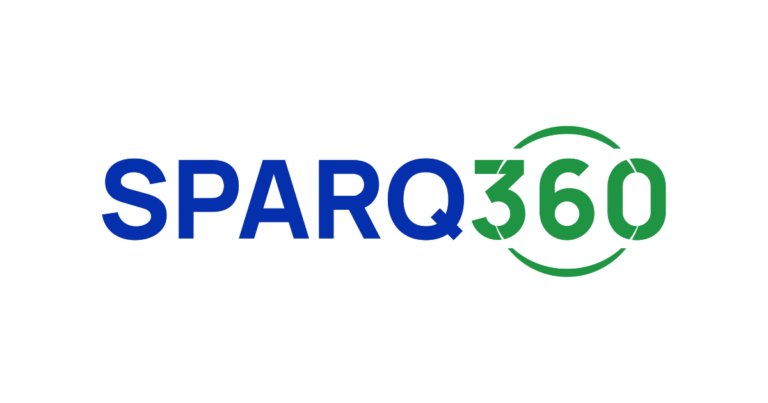Survive and Thrive: How Agile, Digital, and Lean Supply Chains Cut Costs, Outmaneuver Tariffs and Create a Competitive Advantage
Supply chain professionals are facing mounting disruptions as geopolitical tensions, tariffs, and global conflicts—such as U.S.-China trade disputes and the war in Ukraine—complicate operations. Inflation, labor shortages, port congestion, extreme weather, and cybersecurity threats further strain supply chains, underscoring the need for resilience and adaptability. Meanwhile, rising costs and shifting regulations are forcing companies to rethink their cost structures.
As digital transformation, ESG compliance, and supply chain resilience take center stage in boardrooms, manufacturers, retailers, and logistics providers can no longer treat cost-cutting as an occasional initiative. In today’s uncertain landscape, dynamic cost management requires a strategic blend of Lean principles, Agile methodologies, design thinking, and change management. Companies that integrate resilience, efficiency, and continuous improvement into daily operations will not only control costs but also gain a competitive edge.
This article offers a blueprint for adapting to the evolving global cost landscape, emphasizing how companies can optimize their supply chains by prioritizing the fundamentals and keeping things simple.
Rethinking Cost-Cutting Through Agile Supply Chains
Traditional cost-cutting often relies on short-term, slash-and-burn tactics—reducing headcount, squeezing suppliers, or cutting discretionary spending. However, these reactive strategies rarely drive sustainable value. Leading organizations are instead adopting agile methodologies, enabling iterative, data-driven optimizations that enhance efficiency without compromising long-term resilience.
Siemens exemplifies this approach by embedding agile principles into its global supply chain. Using digital twins to simulate cost scenarios in real time, the company follows a crawl-walk-run strategy, developing minimum viable solutions before scaling broader transformations. By continuously refining inventory strategies, supplier partnerships, and production footprints, Siemens improves both cost efficiency and resilience, minimizing risk while maximizing adaptability.
Navigating Tariffs and Trade Shifts with Strategic Relocation
Geopolitical uncertainty—ranging from U.S.-China trade tensions to evolving EU policies—has made tariff mitigation a critical component of supply chain strategy. Businesses worldwide are shifting from short-term cost-cutting to a more strategic approach, focusing on long-term resilience and efficiency.
In response to the U.S. tariffs on Chinese imports, Newell Brands proactively relocated its manufacturing operations to Mexico and Southeast Asia, reducing tariff exposure while increasing flexibility to adapt to future policy shifts. Similarly, HP has been shifting its manufacturing outside of China and stockpiling inventory. By the end of fiscal 2025, over 90% of its products sold in North America are expected to be made outside China, further reducing tariff exposure. In the pharmaceutical sector, Eli Lilly has announced a $27 billion investment to build four new U.S.-based manufacturing plants in anticipation of potential drug import tariffs, signaling a significant shift toward reshoring and reducing reliance on China.
These strategic moves highlight how companies are rethinking supply chain optimization to build resilience in the face of changing global trade policies.
Using Design Thinking to Optimize Inventory and Demand Planning
Inventory management remains one of the biggest cost drains in manufacturing. Many companies rely on outdated forecasting models that fail to account for real-world complexity. By applying Design Thinking, organizations can reframe inventory challenges, prototype new solutions, and refine strategies before committing to full-scale implementation.
Amazon, for example, has applied Design Thinking principles to transform its inventory and fulfillment strategies. At its highly automated Shreveport facility, Amazon integrates robotics, AI-powered demand forecasting, and real-time inventory tracking to streamline operations. Instead of relying solely on traditional forecasting, the company continuously prototypes and refines its AI-driven inventory models, ensuring stock levels dynamically adjust to shifting consumer demand. This iterative approach has led to a 25% reduction in operational costs, lower holding costs, and faster order fulfillment.
Similarly, Zara (Inditex) has built one of the most agile supply chains in retail by applying Design Thinking methodologies. The company leverages small-batch production, rapid feedback loops, and real-time demand sensing to manage inventory with unparalleled flexibility. By keeping manufacturing close to key markets and iterating on inventory decisions weekly, Zara minimizes excess stock, reduces markdowns, and enhances responsiveness to fast-changing consumer preferences.
While Design Thinking is not a conventional inventory management strategy, companies that emphasize rapid experimentation, iterative learning, and cross-functional collaboration are effectively applying its core principles. Those who embed this mindset into their supply chains will gain a competitive edge—cutting costs while improving adaptability in an unpredictable global market.
Lean and Six Sigma: The Unfinished Revolution
Lean and Six Sigma have long been pillars of cost management, but many companies fail to embed them into day-to-day decision-making. Rather than treating these as static process improvement initiatives, manufactures, retailers and logistics providers should adopt continuous experimentation—running small-scale pilots before scaling improvements.
Mattel, the renowned toy manufacturer, has recently overhauled its supply chain to enhance agility and responsiveness to market trends. In the wake of the “Barbie” movie’s success, Mattel swiftly introduced the “Weird Barbie” doll, exemplifying its newfound nimbleness. This transformation involved consolidating production facilities, outsourcing certain manufacturing processes, and streamlining operations at existing sites. By reducing product variety, Mattel improved demand forecasting and inventory management, enabling rapid adaptation to consumer demand. These strategic changes have led to cost reductions and increased profitability, even amidst declining sales in the traditional toy sector.
Digital Transformation as a Cost Reduction Lever
The next frontier in cost reduction lies in digital transformation. However, technology alone is not a panacea. Successful digitization requires an iterative, human-centered approach that aligns with organizational goals and adapts to evolving market dynamics.
Procter & Gamble (P&G) offers a compelling case study in leveraging advanced technologies to drive supply chain optimization. The company has integrated artificial intelligence (AI) to refine demand forecasting, inventory management, and logistics. By using AI algorithms to analyze historical sales data and market trends, P&G has significantly improved its ability to predict future demand with precision and streamline inventory flow.
In parallel, P&G has forged a strategic partnership with Microsoft to advance its digital manufacturing efforts. Through the use of Microsoft’s Azure suite, the company is digitizing data across more than 100 global manufacturing sites, facilitating real-time visibility. By harnessing the power of AI, machine learning, and edge computing, P&G is enhancing productivity, reducing costs, and fostering a culture of continuous innovation.
These initiatives reflect P&G’s commitment to harnessing the transformative power of technology while recognizing that true success in digital transformation requires thoughtful integration and human collaboration. This approach has led to measurable improvements in both efficiency and cost-effectiveness, setting a strong foundation for future growth in an increasingly digital landscape.
Strengthening Supplier Collaboration to Unlock Value
Manufactures, retailers and logistics providers that treat suppliers as cost centers miss a key opportunity: joint value creation. Instead of adversarial negotiations, companies should apply agile collaboration principles to procurement.
Unilever has pioneered an open innovation model, collaborating with suppliers and external partners to co-develop sustainable packaging solutions that reduce costs and environmental impact. This approach has turned supply chain sustainability into a competitive advantage. About a decade ago, long before ESG became a major focus, Unilever launched the Unilever Foundry, a global platform to accelerate partnerships with high-growth startups, focusing on co-developing solutions like sustainable packaging. More recently, the company has invested heavily in packaging research at its Global Packaging R&D Centre to accelerate plastic reduction and develop new sustainable materials. These efforts align incentives with suppliers and foster innovation, driving significant progress in sustainable packaging.
Adapting to Change: Essential Supply Chain Strategies for Uncertain Times
In today’s climate of geopolitical tension and economic uncertainty, businesses must re-examine their foundational supply chain strategies to ensure they remain resilient and cost-efficient. While innovation plays a critical role, revisiting core principles can provide the stability needed to navigate these turbulent times:
- Flexible inventory management: Instead of rigid just-in-time (JIT) models, companies are adopting more flexible inventory strategies that incorporate buffers to avoid overexposure to disruptions, especially in light of rising tariffs and supply chain interruptions.
- Logistics network optimization: Data-driven route planning is helping companies streamline transportation and reduce costs by 10-15%, ensuring greater efficiency even as fuel prices and supply chain challenges fluctuate.
- Supplier diversification: A strategic mix of nearshoring and offshoring allows companies to mitigate risks associated with global trade tensions while maintaining cost efficiency. Nearshoring can reduce dependence on volatile international markets and avoid hefty tariffs.
- Resilient sourcing strategies: With tariffs impacting supply chains globally, companies are diversifying their sourcing locations and building strategic stockpiles. This reduces reliance on any one region and helps shield the business from sudden policy shifts or international trade barriers.
- Demand forecasting with AI and big data: Leveraging advanced analytics, such as AI and big data, to forecast demand with greater precision is more critical than ever. This allows companies to anticipate changes in both consumer behavior and supply chain dynamics, ensuring they can respond proactively to shifting conditions.
- Digital twins for real-time visibility: The use of digital twins—virtual replicas of physical supply chains—enables companies to monitor and adjust in real-time to disruptions, whether from geopolitical shifts, natural disasters, or market volatility. This enhanced visibility allows for better decision-making and quicker responses.
By integrating these strategies with modern technology, businesses can build more adaptable, resilient supply chains, ensuring they are prepared for the challenges of an increasingly unpredictable global environment. Revisiting these foundational principles provides both the flexibility and stability necessary to navigate high-tariff landscapes and other emerging challenges.
The New Supply Chain Playbook
The cost imperative for most organizations has changed. Static cost-cutting no longer works in a world of continuous disruption. Instead, companies must embed agility, design thinking, and digital innovation into their supply chain strategies. The most successful firms will treat cost efficiency not as a one-time initiative but as an ongoing, iterative process that builds resilience for the long term. By applying these principles, manufactures, retailers and logistics providers can not only reduce costs but also gain a strategic edge in an increasingly complex global marketplace. The winners in this new era will not be those who cut the deepest, but those who adapt the fastest.







